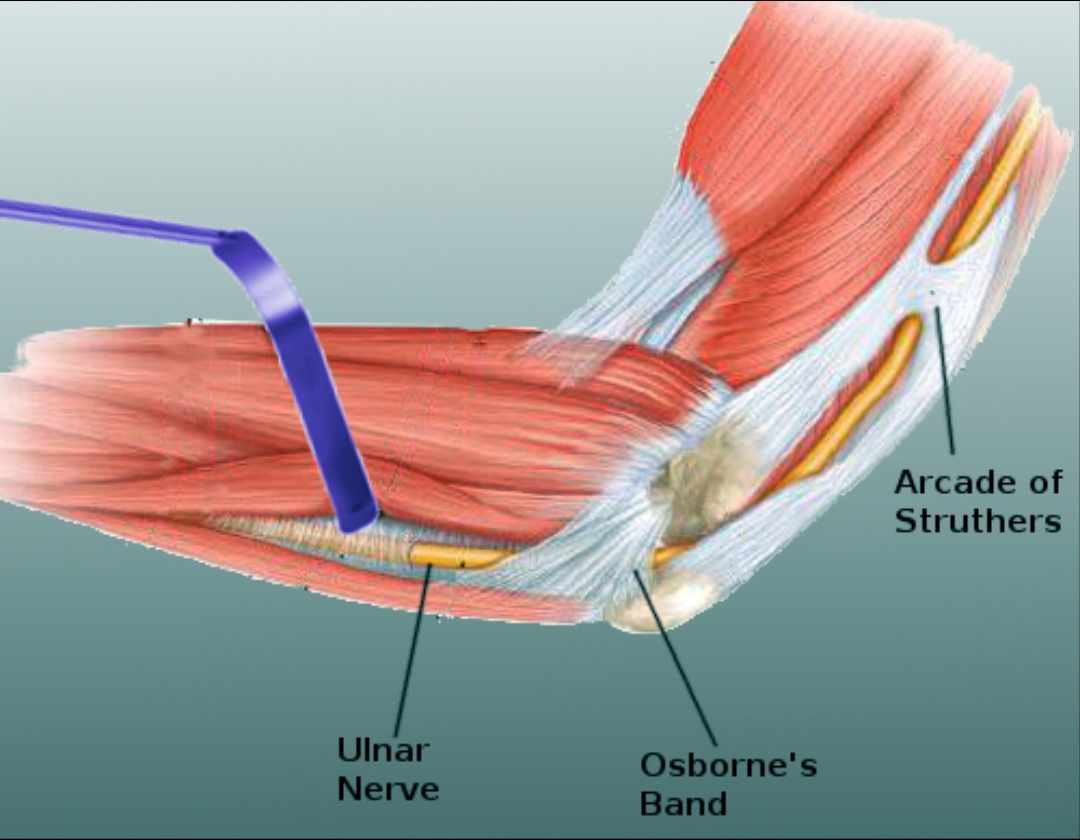[1]
Robertson C, Saratsiotis J. A review of compressive ulnar neuropathy at the elbow. Journal of manipulative and physiological therapeutics. 2005 Jun:28(5):345
[PubMed PMID: 15965409]
[2]
De Maeseneer M, Brigido MK, Antic M, Lenchik L, Milants A, Vereecke E, Jager T, Shahabpour M. Ultrasound of the elbow with emphasis on detailed assessment of ligaments, tendons, and nerves. European journal of radiology. 2015 Apr:84(4):671-81. doi: 10.1016/j.ejrad.2014.12.007. Epub 2014 Dec 19
[PubMed PMID: 25638576]
[3]
Simonson S, Lott K, Major NM. Magnetic resonance imaging of the elbow. Seminars in roentgenology. 2010 Jul:45(3):180-93. doi: 10.1053/j.ro.2010.01.002. Epub
[PubMed PMID: 20483114]
[4]
Simsek S, Er U, Demirci A, Sorar M. Operative illustrations of the Osborne's ligament. Turkish neurosurgery. 2011:21(2):269-70. doi: 10.5137/1019-5149.JTN.3764-10.1. Epub
[PubMed PMID: 21534217]
[5]
Bradshaw DY, Shefner JM. Ulnar neuropathy at the elbow. Neurologic clinics. 1999 Aug:17(3):447-61, v-vi
[PubMed PMID: 10393748]
[6]
Granger A, Sardi JP, Iwanaga J, Wilson TJ, Yang L, Loukas M, Oskouian RJ, Tubbs RS. Osborne's Ligament: A Review of its History, Anatomy, and Surgical Importance. Cureus. 2017 Mar 6:9(3):e1080. doi: 10.7759/cureus.1080. Epub 2017 Mar 6
[PubMed PMID: 28405530]
[7]
Jie KE, van Dam LF, Verhagen TF, Hammacher ER. Extension test and ossal point tenderness cannot accurately exclude significant injury in acute elbow trauma. Annals of emergency medicine. 2014 Jul:64(1):74-8. doi: 10.1016/j.annemergmed.2014.01.022. Epub 2014 Feb 13
[PubMed PMID: 24530106]
[8]
Bonfiglioli R, Lodi V, Tabanelli S, Violante FS. [Entrapment of the ulnar nerve at the elbow caused by repetitive movements: description of a clinical case]. La Medicina del lavoro. 1996 Mar-Apr:87(2):147-51
[PubMed PMID: 8926917]
Level 3 (low-level) evidence
[9]
Davidge KM, Gontre G, Tang D, Boyd KU, Yee A, Damiano MS, Mackinnon SE. The "hierarchical" Scratch Collapse Test for identifying multilevel ulnar nerve compression. Hand (New York, N.Y.). 2015 Sep:10(3):388-95. doi: 10.1007/s11552-014-9721-z. Epub
[PubMed PMID: 26330768]
[10]
Wali AR, Gabel B, Mitwalli M, Tubbs RS, Brown JM. Clarification of Eponymous Anatomical Terminology: Structures Named After Dr Geoffrey V. Osborne That Compress the Ulnar Nerve at the Elbow. Hand (New York, N.Y.). 2017 May 1:13(3):1558944717708030. doi: 10.1177/1558944717708030. Epub 2017 May 1
[PubMed PMID: 28503939]

